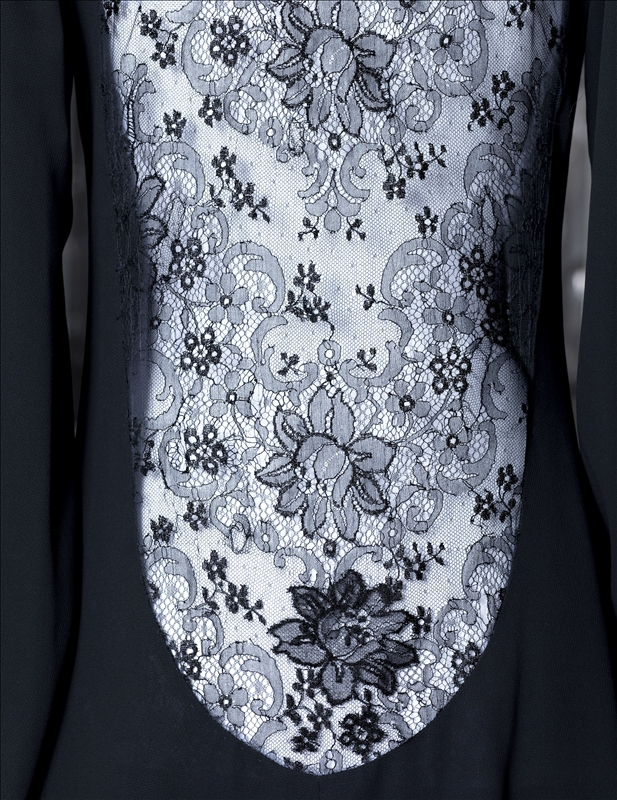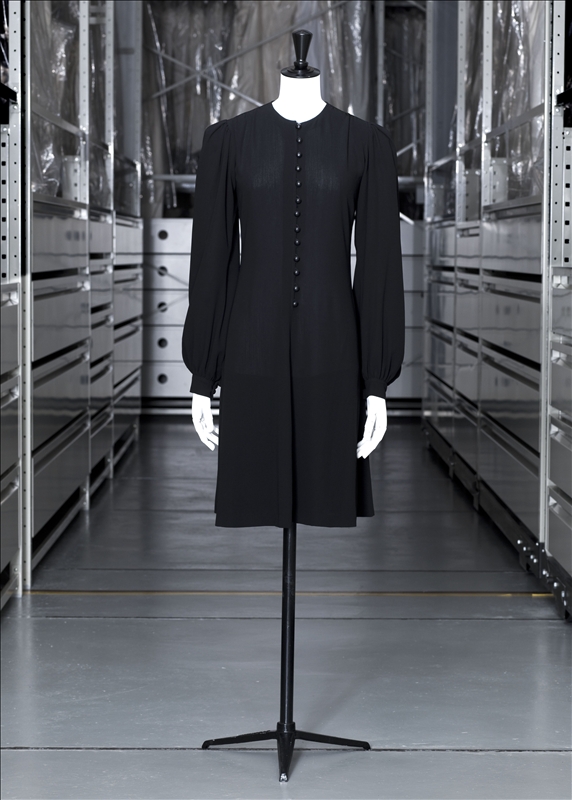

The back is one of the body's most vulnerable parts. Aesthetically speaking a woman cannot control the appearance of her back, and so is at the mercy of whoever is looking at her. Thus she can become the defenceless 'female object' par excellence, scrutinised and above all desired. And yet since the 1920s her measureless power has lain in the daring she brings to exposing her skin to an unknown who asks only to know it better. Unequalled in his awareness of the erotic power of this version of hide-and-seek, Yves Saint Laurent (1936–2008) used his 1970–1971 autumn-winter collection to reveal this ultimate emblem of his talent. This austere, black, long-sleeved dress was worn by his muse Betty Catroux, and while its front is buttoned very high, the back is immodestly veiled with silk Chantilly lace from the neck to the base of the spine. With its blend of the pious and the outrageous, the dress as worn by model Marina Schiano was immortalised by photographer Jean-Loup Sieff in the September 1970 issue of Vogue.
Yves Saint Laurent

